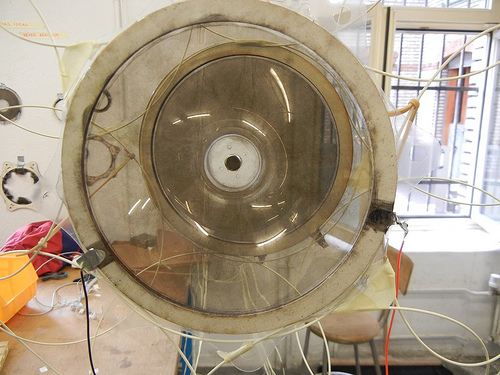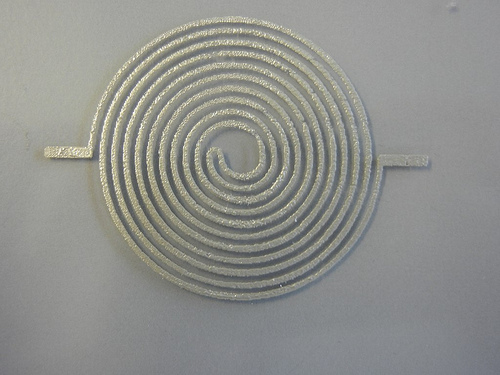Actuated Matter Workshop Part 1: Intro
Last week I found myself in Zürich, Switzerland, which in itself is somewhat unusual for a person who typically lives and works in the great state of Texas. To add to that, while installed in said location I experienced one of those intensive periods of excitement and discovery that only happen when you toss yourself and an over-stuffed rolling suitcase headlong into a foreign country and participate in a workshop in order to learn how to screen print electroluminescent lamps (and also to learn that, although they are healthier, multigrain croissants are simply not as delicious as the regular kind).
I should preface this by explaining, as I did many times to curious collaborators over the course of a week skipping up and down five flights of art school stairs coated in phosphor ink, exactly how I came to be in Switzerland in the first place. The travel process was pretty standard, actually: I took a car to the airport, and then flew to another airport, and then another one, and then rode an extremely quiet and efficient train into Zürich, which turned out to be an extremely quiet and efficient city.
But in all seriousness, I’d like to extend sincere thanks to Manuel Kretzer, CAAD – Chair of Computer Aided Architectural Design, Swiss Federal Institute of Technology, Karmen Franinovic, Interaction Design, DDE, Zurich University of the Arts, Daniel Bisig, Institute for Computer Music and Sound Technology, DMU, Zurich University of the Arts, and Rachel Wingfield and Mathias Gmachl of Loop.pH, along with my amazing fellow workshop collaborators, all of whom I consider excellent, encouraging, and genius-tastic new friends, for the opportunity to participate in the Actuated Matter Workshop because … the experience was completely epic.
So epic, in fact, that I am in the process of producing a series of posts that focus on each of the materials/technologies that we investigated (I will turn the list into a series of links once everything is written because only today am I over my debilitating jet lag/have finished doing all my laundry):
Glass-fiber Reinforced Plastic
Electroluminescent (EL) Lamps
Electro-active Polymer (EAP)
Printed Loudspeakers
Thermochromic Ink
Although I have written about some of these items in the past, I must confess to you all that a hands-on approach where you try to make these materials do something specific has given me a new insight – and I almost feel like each has a distinct personality (and some may even have distinct personality disorders).
Another thing I noticed was that there is a peculiar rush associated with actuating matter – when Manuel casually electrocuted our EL lamps into functionality, I felt like Dr. Frankenstein watching the monster open his eyes for the first time and it flooded me with a curious mixture of fascination and relief (not to mention a bit of suprise that the modules actually worked after the number of failed trial attempts).
EL Modules from ARCHITERIALS on Vimeo.
And, lucky for us, the EL lamps did not turn around and run out the door to kill innocent villagers like Frankenstein’s monster. Well, at least, not as far as I know….





















[…] current. As an aside, we did the same thing when we screen printed an electroluminescent lamp in Switzerland this summer and were hoping to not get electroshocked by the circuits. (More on that soon). In contrast to […]
Leave a Wordpress Comment: